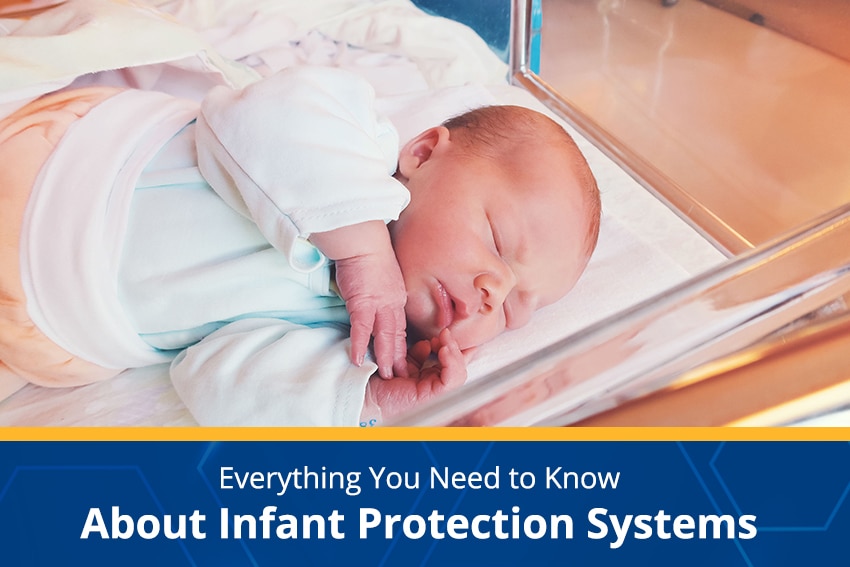

Infant Protection Systems Explained
When a family has just welcomed a child into the world, this dream for many can become a nightmare if the infant goes missing.
While abduction is a critical concern, accidental mix-ups are possible even in the most qualified birthing facilities.
The benefits of an infant protection systems cannot be understated.
The use of real-time locating systems (RTLS) for infant protection systems has become increasingly popular as hospitals and birthing centers discover the benefits of having an RTLS system that allows them to locate even their smallest, most precious patients quickly.
Perhaps the most challenging decision comes down to what infant protection systems to choose to meet your needs best.
Critical factors include cost, hardware and installation, tag requirements, staff training, future scalability, and many other factors. Here is what you need to know about infant protection systems.
How Infant Protection Systems Work
When it comes to providing infant RTLS, most infant protection systems solutions use the same components:
- Tags
- Readers
- Exciters
- Software
- Network
Tags are placed on the mother and the infant to be identified/paired with one another.
Readers detect the tags and triangulate their positions, while exciters trigger tags to report their position to readers when the tag arrives at specific locations.
Readers are typically installed at regular intervals within a building to provide tag detection and triangulation information.
The number of readers required to detect tags varies depending on the necessary degree of accuracy and reader’s range.
Exciters are typically installed over doorways to identify when tags enter or exit specific areas. The number of exciters depends on the requirement to identify tags at specific locations to confirm tag detections.
Software is the tool that interprets and shows the tag location. The software performs on both desktop and mobile devices for seamless identification and location services.
Network options vary depending on the type of solution best suits your needs. The two most popular RTLS solutions are 433MHz based Active radio-frequency identification (RFID) and 2.4GHz Wi-Fi-based Active RFID.
433MHz vs. Wi-Fi
The two most popular RTLS solutions are 433MHz based Active RFID and 2.4GHz Wi-Fi-based Active RFID.
433MHz is an unlicensed wireless radio frequency band that companies use specifically for RTLS, whereas Wi-Fi is generally used more for proximity tracking and is less granular.
433MHz Active RFID has significant advantages over more traditional 2.4GHz Wi-Fi Active RFID.
Some advantages include lower power usage for the tags, smaller, more discreet tags, higher range and performance, and the kind of granularity you’d want when it comes to infant security.
| 433MHz based Active RFID | 2.4GHzWi-Fi-based Active RFID |
|
|
When it comes to infant security try Infant Protection Systems, 433MHz is the optimal choice, especially because they allow for more granular RTLS. However, one disadvantage of 433MHz is the initial installation cost, precisely because it requires a dedicated network and hardware to operate.
On the flip side, systems operating on 433MHz are expandable to protect staff, older patients, and equipment without installing new infrastructure or software, saving you money in the long run.
Protect What Matters Most
AT SSP, our team of certified security experts is dedicated to helping you ensure the safety and wellbeing of infants in your care with the most advanced RTLS solutions in the industry.
That’s why SSP is proud to recommend and offer the GuardRFID® TotGuard Infant & Pediatric Security Solution. TotGuard is a state-of-the-art infant protection systems providing mother-infant wearable tags designed to be lightweight, comfortable, and effective.
With a wide range of uniquely-paired infant and mother tags, this cutting-edge system alerts if infants are matched with the wrong parent. Besides providing patients’ real-time location, healthcare staff is immediately notified if patients unexpectedly move outside of secured areas.
The solution offers a wide range of door security and control options, allowing for monitoring new moms, babies, other pediatric patients, and staff in one innovative system.


